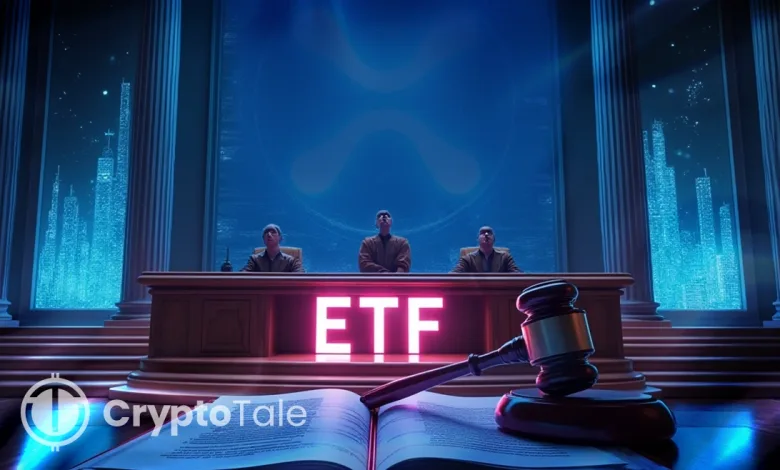Crypto ETFs Open Regulated Path for Digital Asset Investors

As institutional enthusiasm for crypto stands at an all-time high, regulators are mopping up the lines between bold innovation and prudent oversight. The recent wave of Spot ETFs has crystallized this tension of offering a regulated bridge into digital asset exposure on one side and triggering scrutiny on the other side. The decision on January 10 allowed 11 Bitcoin ETFs to begin trading, granting investors regulated access to Bitcoin’s price through familiar ETF structures. Coinbase Institutional’s Brett Tejpaul described it as the moment “crypto’s gone mainstream,” as billions of dollars in daily volumes followed.
This breakthrough came after years of resistance by the U.S. Securities and Exchange Commission (SEC), marking the beginning of a new chapter in integrating cryptocurrency with the existing financial world. While the approval of spot ETFs opened up opportunities, the regulators intensified their scrutiny of the sector, setting the stage to pit innovation against investor protection.
Now that there are spot ETFs for both Bitcoin and Ethereum, one of the few remaining questions shifts from whether crypto has a place on Wall Street to how it will be perceived in the years ahead. Will these products tie institutional capital into the crypto ecosystem in a safe manner, or will they become a test for regulatory defenses against new market risks?
Motives Behind the Crypto ETF Push
The increase of institutional interest in crypto ETFs is rooted in its clear strategic and market factors. Large asset managers see ETFs as a way to expand access to digital assets while reducing entry barriers for investors. Fox Business reported that BlackRock CEO Larry Fink described his firm’s aim as “democratizing” crypto investment by lowering costs and improving accessibility.
Fink also pointed out that buying Bitcoin directly in the current stage can be expensive and technically complex, involving wide bid-ask spreads, high fees, and wallet management. By contrast, a regulated ETF enables exposure to Bitcoin or Ether through the same brokerage accounts used for stocks, offering tighter spreads and lower costs.
The BlackRock CEO also believed that the impact could be akin to what ETFs triggered in the mutual fund industry: the broadening of participation and reduction of investment costs. The appeal runs on both the retail and institutional levels. Retail investors, perhaps uninitiated in cryptocurrency custody, can now access Bitcoin exposure within tax-advantaged retirement accounts. Institutional clients can use Bitcoin ETFs in portfolios while adhering to compliance frameworks.
A Chainalysis report further elucidated that ETFs can provide investors with a risk-managed and safe route to achieving portfolio exposure to Bitcoin, which is backed by well-known custodians, by securing the underlying investments. This framework uses cryptocurrency within traditional portfolio management systems, as well as satisfying the due diligence provisions. Trading on the national securities exchanges enables institutions to work within risk management and regulatory frameworks, thus bridging traditional finance and the crypto space.
As of mid-2025, the SEC is reviewing more than 75 cryptocurrency ETF applications, covering spot products for Solana, XRP, Dogecoin, Cardano, Avalanche, Polkadot, and other digital assets. Filings from major issuers such as VanEck, Grayscale, 21Shares, and Bitwise are awaiting decisions. Reuters reports that the new SEC guidance aims to shorten approval timelines from 240 days to 75 days, and the recent acceptance of in-kind creation and redemption for Bitcoin and Ether ETFs could benefit pending altcoin proposals, particularly XRP, by improving operational efficiency and aligning products with traditional ETF standards.
Related: Kazakhstan Launches First Bitcoin Spot ETF in Central Asia
Innovation vs. Investor Protection
Crypto ETFs have developed within the framework of strict regulation aimed at managing risk and securing the integrity of the market. The conservative approach is an indicator of the unstable past of the cryptocurrency markets, with cases of fraud, hacking, and speculation being prevalent. Regulators want to help avoid market manipulation, impose requirements on disclosure, and make sure that there are fair trading conditions. The need to adapt the crypto products to existing financial rules is perceived as the way to reduce the risks and provide innovation with the opportunities to advance.
The approval process for spot Bitcoin ETFs involved meeting surveillance-sharing requirements with regulated markets to detect suspicious trading activity. Exchanges listing these ETFs implemented agreements with platforms such as Coinbase to provide trading data for monitoring purposes. This infrastructure mirrors that used for traditional securities, creating a direct line of oversight for potential market irregularities.
By making it compulsory that ETFs trade on national securities exchanges with the present fraud-prevention rules, regulators sought to eliminate practices like wash trading and pump-and-dump schemes that have historically ravaged unregulated crypto markets. The ETF model provides a pathway for investment, shifting crypto exposure from offshore and unsupervised venues into the regulated U.S. securities framework.
Despite these measures, tension remains between the drive for innovation and the need for protection. Some in the industry call for tailored crypto legislation to encourage growth, while regulators continue to enforce laws rigorously. The SEC’s approach to ETFs represents a measured compromise, permitting access to digital assets but keeping them under close supervision. The ongoing performance and market impact of these ETFs will determine whether this balance holds or if calls for tighter controls grow stronger.
Crypto’s Integration into Traditional Finance
The approval of spot crypto ETFs under SEC oversight signals a significant shift in the relationship between digital assets and traditional finance. According to Reuters, recognizing Bitcoin and Ethereum as ETF-eligible assets acknowledges their long-term role in the financial landscape. This pattern has the ability to encourage other jurisdictions to speed up similar integration efforts. Canada approved the first Bitcoin ETF in 2021, and Europe has hosted crypto exchange-traded products for years. The U.S. joining this trend suggests a wider global normalization of cryptocurrency as an investable asset class.
The immediate effect is a growing acceptance of crypto in mainstream portfolio strategies. Bitcoin, often likened to “digital gold,” is now described by Fink as an international asset and alternative store of wealth. With ETFs in place, more institutions may allocate a percentage of assets to cryptocurrency, embedding it alongside stocks, bonds, and commodities in diversified strategies, thus strengthening the connection between crypto markets and conventional markets.
The ETFs offer a controlled pathway through which capital can flow between the two, and they have the potential to cause systemic linkages. Regulators like the Financial Stability Oversight Council can analyze whether large-scale crypto investment products are at risk during market stress. ETF disclosures and exchange trading data increase transparency relative to many offshore venues, giving regulators and investors better visibility.
Traditional custodians and major exchanges are increasingly involved in crypto-related services, further merging the two sectors. Investor education may also benefit, as ETF prospectuses detail risks and market mechanics in accessible terms. Over time, the line between “crypto finance” and “traditional finance” may blur, as digital assets become routine components of regulated investment portfolios.
Related: BlackRock Avoids XRP, Solana ETFs Amid Unclear Rules
Conclusion
The crypto ETFs are considered the turning point for integrating the digitalized instruments with the regulated financial market. With Spot Bitcoin and Ethereum ETFs approved by the SEC, a defined way of investor access to the long-awaited markets is witnessed in a highly governed manner. The institutions have reacted rapidly, as they consider these products not only as a competitive advantage but also as an opportunity to incorporate crypto into diverse approaches. Concurrently, regulators have been supporting protective structures, which maintain market integrity and transparency.
Moreover, with the rapid market momentum and the parallel push for regulated innovation, it defines how crypto and traditional finance will evolve in the future. The greater the stability of digital assets within mainstream markets, the better this balance can be maintained, enhancing risk management and enabling global regulators to keep pace with evolving technologies. The process of developing this relationship will not only have effects on investor portfolios but also on the future architecture of the financial system itself.




